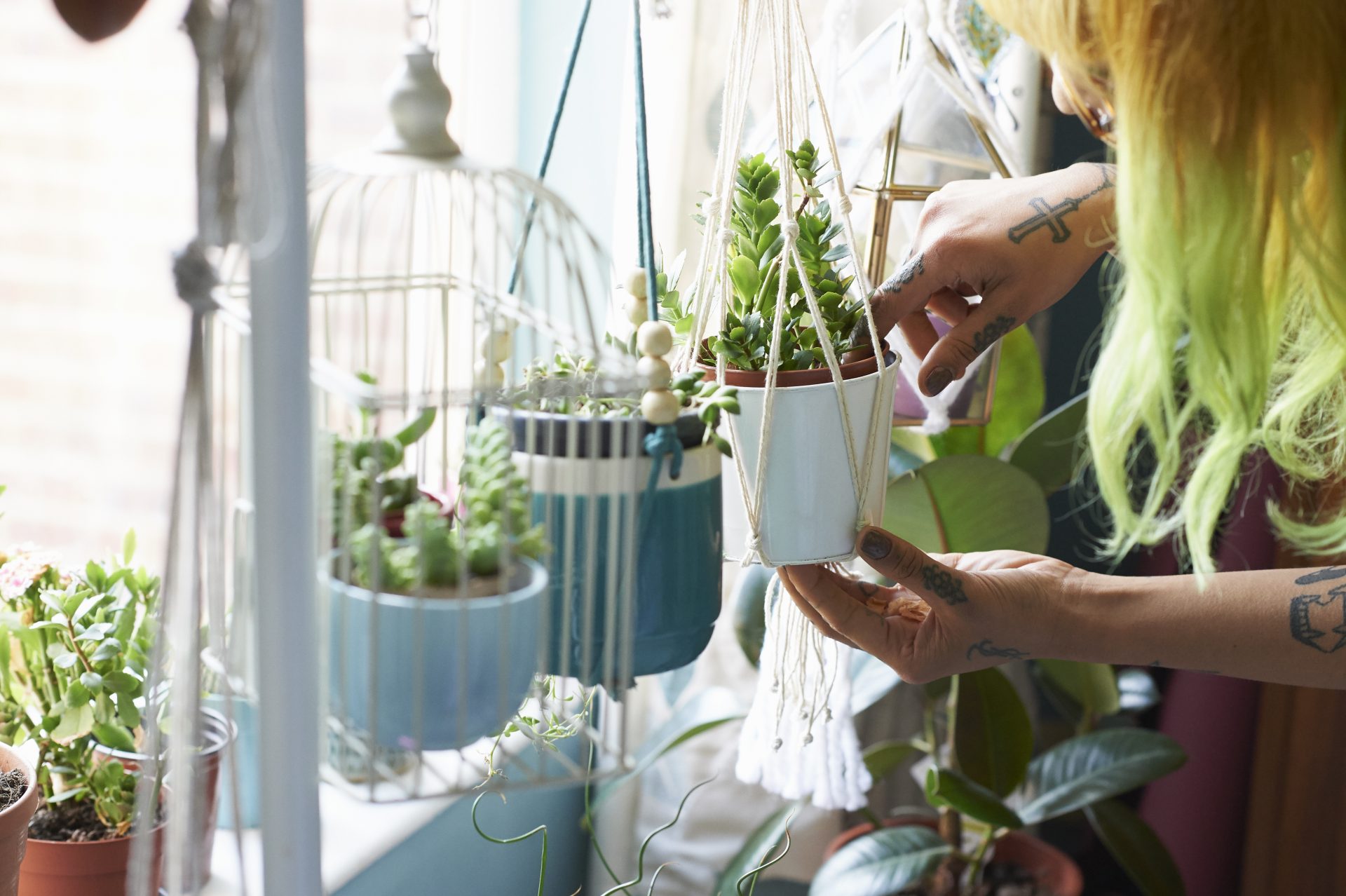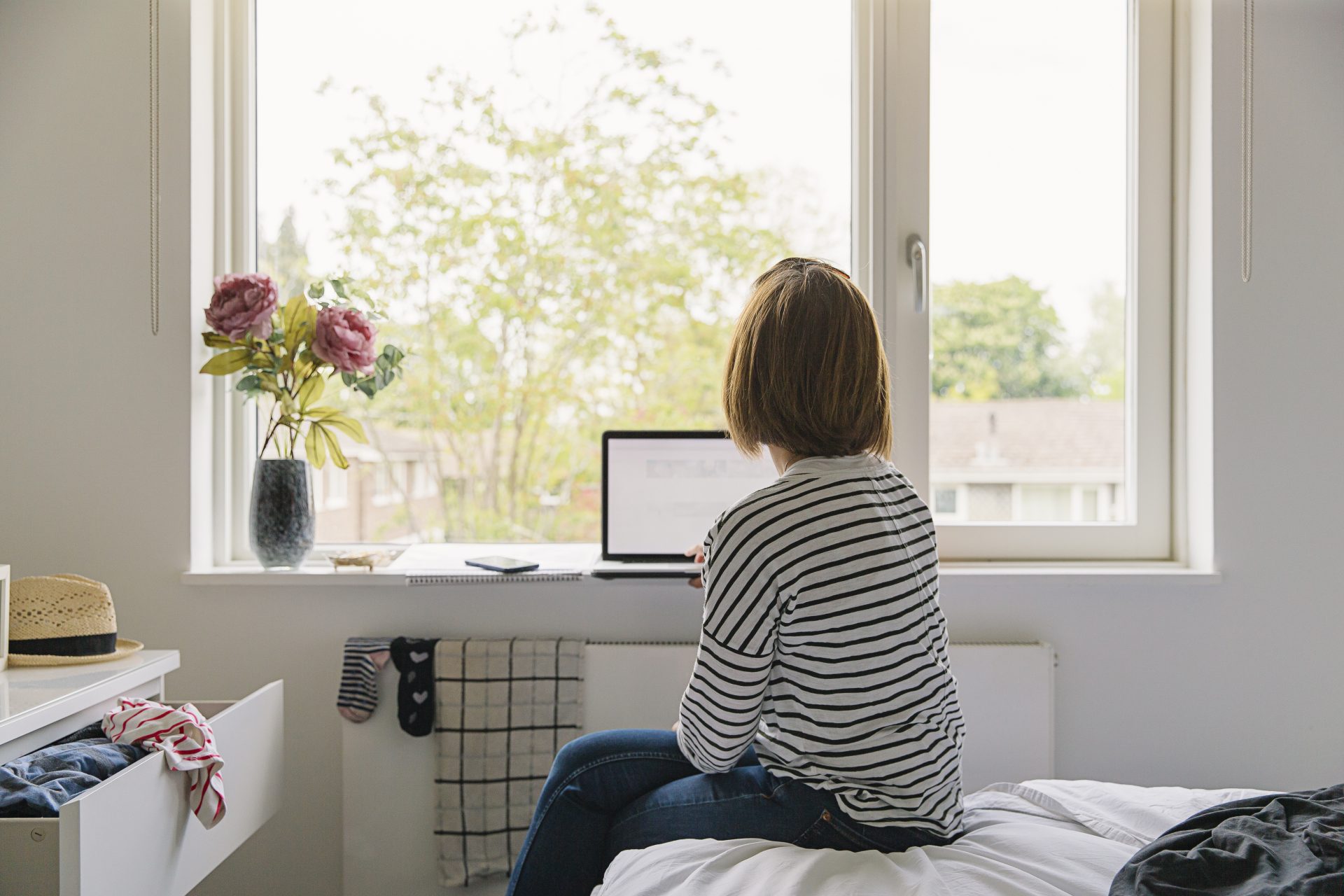
From paint colour to plants: 7 simple ways to make your home healthier
09/30/2021Written by Alex Sims
We’ve spent more time in our homes than ever before, so making sure we’re happy and healthy in them is vital. Designer and architect Oliver Heath tells Stylist his secrets for creating a home that’ll improve both your mental and physical health.
Over the last 18 months, we’ve spent more time in our homes than ever before. During the pandemic, our flats and houses became the centre of our work and social lives, as well as a space to sleep and relax. And with the move to working from home showing no signs of abating, it’s safe to say our homes will be central to our lives for the foreseeable future.
Spending so much time between our four walls has made many of us re-evaluate what we want from them and in an age of Instagram, virtual shopping, AR apps and interiors influencers, it’s never been easier to try out the latest homeware trends. Property buyers, GoodMove, found that 48% of people in the UK had started home improvement projects over lockdown, spending an average of £1,640 on each upgrade.
However, as we lust after the latest interior trend, we may forget to factor in just how much the design of our homes can affect our mental and physical health.
Oliver Heath is part of a new wave of designers and architects factoring in people’s mental and physical wellbeing into their designs. “It’s a different way of thinking about design, instead of just slavishly following the fashions,” he tells Stylist.
Oliver studied architecture and worked on TV programmes such as Changing Rooms, before founding Oliver Heath Design, which specialises in creating sustainable homes that “not only benefit the planet but also benefit the human beings living in them.”
After writing numerous whitepapers on healthy home design, Oliver has condensed his company’s accumulated knowledge into a book: Design A Healthy Home: 100 Ways To Transform Your Space For Physical And Mental Wellbeing. “Our lives have been very different over the last 18 months,” says Oliver. “Our homes have had to take on more functions than ever before. This is where the beauty of design can step in and support you in ways you may not have realised.”
From the light and air quality in your home to the colours on our walls and the texture of our homeware, there are lots of small things that can drastically affect our overall health. Here, Oliver gives his advice for making your home healthier no matter what your budget or living situation.
Choose the right colours
No matter how good it looks on Instagram, the latest interior trends filling up your feeds might not be the most beneficial for your health.
“Deep, dark colours are very popular at the minute and produce great images,” says Oliver. “But dark walls stop light reaching into a room so you need more electric light, which can disrupt our sleep.”
Oliver suggests that we take a completely new approach to colour, based on something called ecological balance theory. “It suggests that we react well to colours we’ve previously had positive experiences with and most of these tend to be colours we find in nature,” says Oliver.
“Blue reminds us of cool pools of water, while greens are more invigorating. Colours like yellows are more warming and sociable because they remind us of sunshine and summer crops. Reds and oranges are stimulating and remind us of ripe fruits and berries.”
“It’s all about finding a way to weave colours of nature into your home in a way that creates a sense of calm or a sense of energy.”
Change up your lighting
“Light is really, really important in how we appreciate our space,” says Oliver. Light not only connects to what time of day it is, the season and the landscape, it also helps us create a balanced circadian rhythm – our bodies’ reactions to light and dark across a 24-hour period that affects our mood and behaviour.
Our bodies release certain hormones like melatonin and serotonin – the body’s sleep and wake hormones – which are massively impacted by light exposure. The more bright natural light we’re exposed to during the day and the softer the light we encounter in the evenings the more balanced our circadian rhythm will be, preparing us for sleep.
“In our modern urban environments, we spend 90% of our lives indoors, which means we rely on electric lighting that can be very energising and stimulating and messes up our circadian rhythm.”
Oliver advises getting a good amount of natural light in your home during the daytime and thinking more carefully about the artificial light in your home in the evenings.
“Changing your bedside light to a colour-changing bulb will help relax you at night and using a colour changing bedside alarm clock is good for waking up more naturally,” says Oliver.
Look to plants and nature
At the centre of Oliver’s design philosophy is a concept called biophilic design centred around our innate human attraction to nature. “This can be real nature like plants, or it can be about natural light, fresh air, and using natural colours, textures and patterns.”
The natural world affects humans in powerful ways, so Oliver believes bringing these characteristics into your home can stimulate and energise us, as well as help us to calm down and relax. “Just the addition of plants and timber walls can reduce our blood pressure and heart rate,” explains Oliver.
Adding plants to a room can immediately make us feel calmer and safer. “We have existed around plants for thousands of years so we have a lot of psychological associations with them that stem from our evolutionary past. When we see lots of plants and greenery, it makes us feel relaxed and that all our physical needs –fresh air, water and safety – will be met,” he says.
As well as improving our mental wellbeing, Oliver explains that plants can remove toxins from the atmosphere around us and modify temperature and humidity by taking in and releasing water.
Oliver recommends investing in plants like peace lilies and monstera, which are easy to look after and can instantly improve a room.
Pay attention to your home’s air quality
“There are shocking statistics that air quality can be two to five times worse indoors than outdoors and we’ve become sort of habituated to it,” says Oliver.
As modern buildings become more sealed with UPVC windows and bring in more toxic man-made materials, indoor air quality has decreased. Much of these toxins are completely odourless, which means we often don’t realise we’re breathing them in.
Air quality metres can be expensive and hard to get hold of, so Oliver suggests being very conscious of smells in your home that could suggest damp or mould is present.
It’s also important to make sure you’re ventilating your home often. Simple things like opening your windows often and checking your filters and ventilators are working can make a real difference.
It’s also worth doing research when buying new things for your home, so you pick homeware and paint that is free from toxins. Oliver explains that a lot of the things we buy contain volatile organic compounds (VOCs). These gases emitted from many materials like paints, varnishes, building materials, furniture and fabrics are usually harmless individually, but together “creates a cocktail which can irritate us,” says Oliver.
If you do buy new furniture or paint a room, Oliver suggests fully ventilating the room for a few days after to keep the air as fresh as possible.
Make your bedroom into a sleep sanctuary
“Poor sleep is something of a pandemic in itself,” says Oliver. In order to improve our sleep, which also affects our overall health, it’s important to have a bedroom that really prioritises sleep.
“Create a soft, warm, inviting haven where you can really switch off,” says Oliver. He advises avoiding busy, complex wallpapers and patterns and picking calming, relaxing colours instead: “Choosing shades of blue and earthy tones can make us feel relaxed.”
Making sure you have a soft gentle light in your bedroom by using colour changing and dimming lights is important. As is incorporating plants with reversed respiratory systems that remove CO2 and produce oxygen at night is beneficial. Oliver recommends mother in law’s tongue (aka a snake plant).
Create a productive work space
Working from home is part of the new normal and it’s something many of us will be doing for the foreseeable future.
To help improve your WFH set up, Oliver suggests putting your desk by a window: “This will not only expose you to more natural light and help you your circadian rhythm but having trees, greenery or sky in the periphery of your vision will stop you from getting burnt out at your screen all day.”
Being able to see moving trees, clouds and other gentle movements also promotes our non-rhythmic sensory stimuli. “These calming, non-threatening movements can restore our energy, stop stress building up, reduce fatigue and help you get back to being more productive more quickly,” says Oliver.
It’s also important to think about the acoustics around you. “If there are lots of people working from home in the same space, it can easily get distracting,” says Oliver. “Having a little bit of background noise like birdsong or trickling water masks out some of those other noises and helps you focus.”
Make a home designed for sharing
A piece of research called the Harvard Grant Study tracked the health of 268 Harvard students over 80 years from 1938 in an effort to find out what really makes us healthy and happy. One of the conclusions was that people were happiest when they had strong bonds with family and friends.
“I think that’s really powerful, so we believe it’s important to design a home that fosters those connections and helps people connect,” says Oliver.
Oliver suggests trying to make space for a dining table if you can. “It’s an obvious one, but it’s a really important social piece of furniture,” says Oliver. “In this era of connectivity, where people are on their phones and tablets in different parts of the house, having a place where people can sit and congregate is really important.”
If you don’t have space for a dining table, Oliver suggests creating this in other ways like putting a seat in your front garden where you can stop, sit and chat to your neighbours as they walk by. Putting a chair in your bedroom or bathroom so you can chat with your partner or housemate at the end of the day is another easy but transformative solution.
“Anything that allows you to enjoy the space and have little incidental conversations that can often be the most valuable,” says Oliver.
Images: Getty, Oliver Heath
Source: Read Full Article



